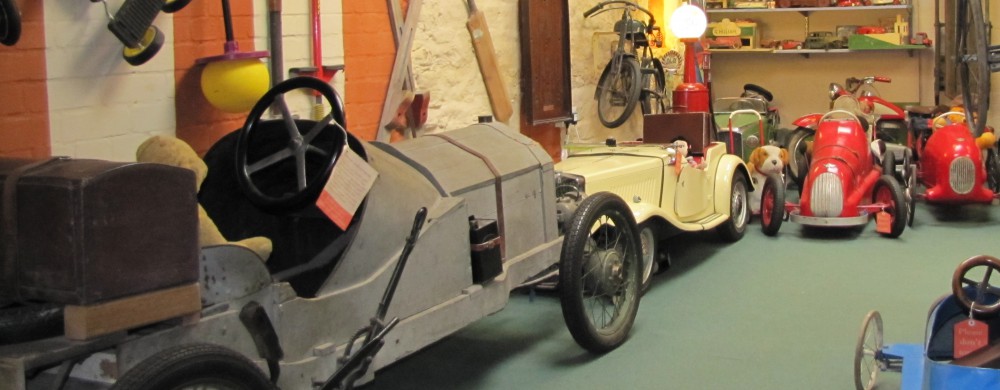As regular visitors to the museum will know only too well, the displays and narratives are not just about motor transport. Quite apart from the gallery devoted to toys, the theme running through much of the museum concerns the social history of Bourton on the Water. There is the gallery devoted to Jack Lake’s garage and the Victorian shop window displays in memory of Collets & Sons (both formerly in the village) and, for some of us, memory-jogging displays in the 1960s/70s Paved Paradise gallery.
Previous posts have drawn attention to those enamel signs throughout the museum that are associated with food. Perhaps, surprisingly for a motor museum and toy collection, there is also a clear musical theme throughout the galleries.
The flared horn loudspeaker was a feature of the early phonographs and gramophones. The phonograph, invented in 1877 by Thomas Edison, initially used a tin foil cylinder and later a hard wax cylinder to record and reproduce music and speech. By the 1910s, the commercial battle between the cylinder and the disc had been won by the disc even though, initially, the quality of the reproduction was inferior to the cylinder. The disc was easier to manufacture and had a longer playing duration than the solid wax cylinder. Examples of all of these early formats, with their flared horn speaker, are to be found around the museum, including a wax cylinder phonograph with the brand “Edison”.

Even if we are not old enough to remember the horn gramophone playing (once the clockwork motor was fully wound) either the 78rpm discs or the even earlier wax cylinders, we may still recall the image of the patient dog – named Nipper – listening to ‘His Master’s Voice’ and gazing into the open horn of an early gramophone.
One of the more unusual exhibits is the wood and leather cased Peter Pan ‘box camera’ design of portable record player shown here from the 1920s. Those four radial arms support the 10” record.

It is easy to conjure up an image of an inter-war-years, sunny afternoon – picnic cloth spread on the grass, cucumber sandwiches with a glass of something bubbly and the fine tenor voice of Enrico Caruso or Count John McCormack emerging from the leather horn of this portable gramophone.
Moving forward four decades, brings us to the era of pirate radio and in particular Radio Caroline. Radio Caroline has generously supported the museum for many years and used to take part in the 60s weekends held in the museum some years ago. A studio from one of the Radio Caroline ships is exhibited in Paved Paradise.

Amazingly, Radio Caroline is still on the air today, both locally in the Suffolk and North Essex areas via AM (648kHz) and globally via the internet.
The old record players shown above are far from the only musical items in the museum. The Paved Paradise gallery is a good place to spot instruments as well as radios and tape recorders. A few more musical items are dotted around the galleries, did you manage to spot these on your tour?

